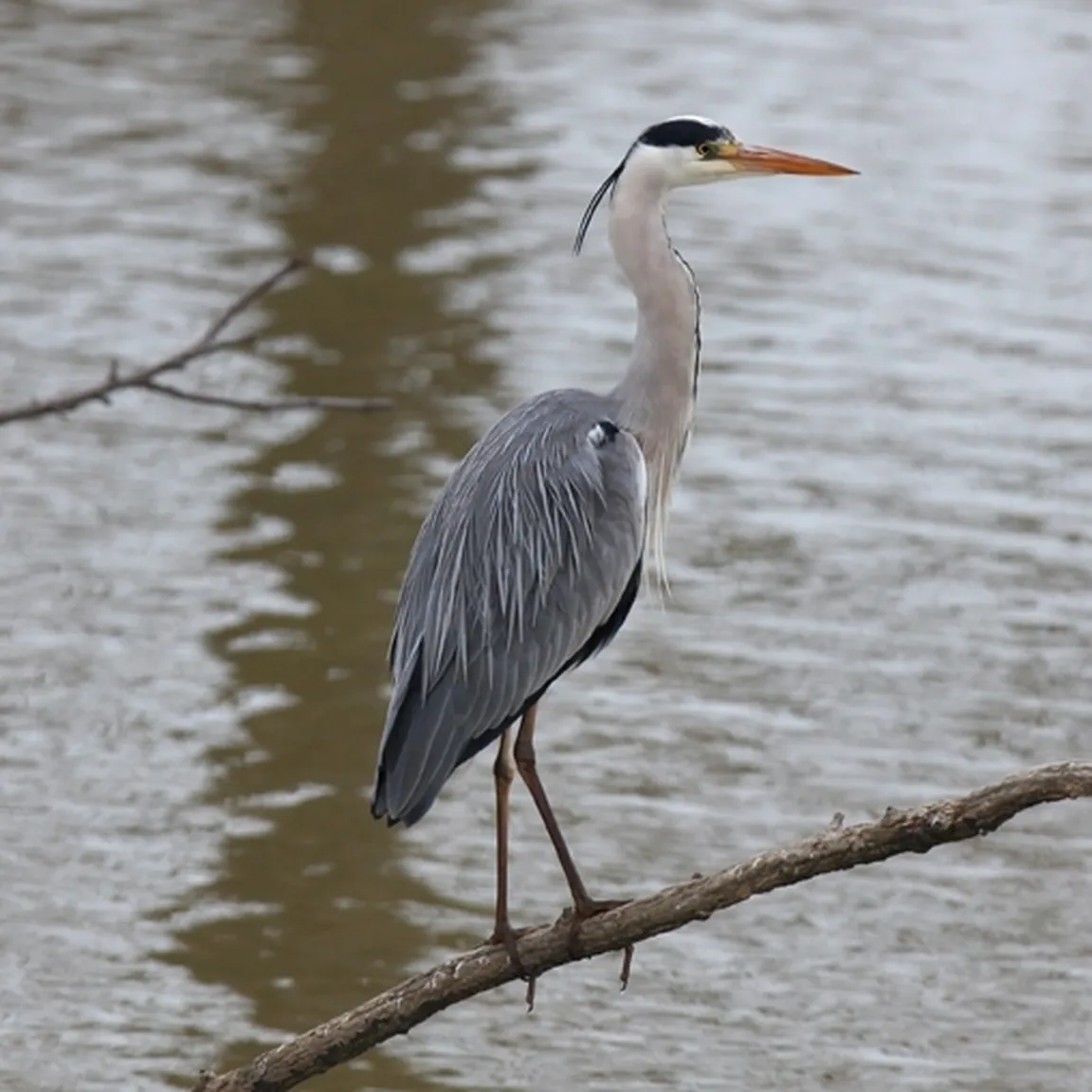The gray heron (Ardea cinerea) is 84 to 102 cm long with an outstretched neck, and its wingspan measures 155 to 172 cm. The gray heron stands out from other herons by its size and sturdy build. The upper part of its body is more or less uniformly ash-gray, the belly part is gray-white, and on the flanks it has black flank stripes. The gray neck, which it completely tucks in when resting, is white at the front, adorned with longitudinal black stripes. A black line runs from above the yellow eye toward the rear part of the head, ending at the nape with a crest of three long black feathers. Adults have the forehead and crown completely white, while this part of the head in young individuals is gray. Its long and strong beak, dirty yellow in color, has the shape of a dagger. With it it skillfully hunts prey either from a hide or by stalking. For hours it can stand motionless on the riverbank and wait for an unsuspecting fish or crayfish to pass by, then it swiftly extends its neck and grabs the prey. Additionally, on its long yellowish-gray legs it wades along the shore of a lake or carefully steps through marsh or meadow, wary of amphibians, reptiles and small mammals. Its keen sight does not miss even snails, insects and bird chicks. The gray heron flies with a tucked neck and outstretched legs, so in flight it can easily be distinguished from a similar crane or stork.
The gray heron is a migratory bird that heads south in September or October. In smaller flocks it migrates at night. In our region it can usually weather the winter, so we see it in Slovenia year-round. In winter, birds that nest high in northern Europe join our gray herons. It returns to breeding areas already early in spring and nests from February to April. It is known for preferring to nest in large colonies. The largest nesting colonies in Europe count even several hundred pairs, but here it mostly nests in smaller groups or even singly. The nest, which it frequently returns to year after year, it most likes to build in the canopy of tall trees near a lake or river, or where it feels safe from predators. Therefore it also nests in impenetrable reeds or on inaccessible rocky outcrops.
The population of the gray heron has recovered to date from merciless hunting in the nineteenth century, when, because of its fish-eating habit, it came into conflict with fishermen and fish farmers, as they protected their fish ponds better against it and ceased harassing it. Today it is threatened especially by thoughtless intrusions into forests, with which nesting sites can be destroyed. Also intrusions in the immediate vicinity of nesting colonies can become too disruptive and nesting there is not successful.


